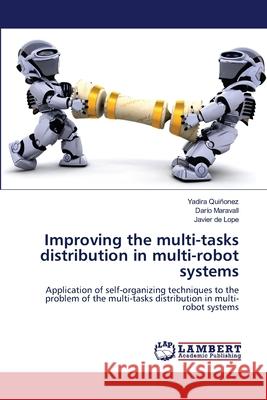Improving the multi-tasks distribution in multi-robot systems » książka
Improving the multi-tasks distribution in multi-robot systems
ISBN-13: 9783659400728 / Angielski / Miękka / 2013 / 132 str.
This work study the coordination of multi-robot systems, in particular, addresses the problem of the distribution of heterogeneous multi-tasks. The main interest in these systems is to understand how from simple rules inspired by the division of labor in social insects, a group of robots can perform tasks in an organized and coordinated way. We are mainly interested on truly distributed or decentralized solutions in which the robots themselves, autonomously and in an individual manner, select a particular task so that all tasks are optimally distributed. In general, to perform the multi-tasks distribution among a team of robots, they have to synchronize their actions and exchange information. Under this approach we can speak of multi-tasks selection instead of multi-tasks assignment, which means, that the agents or robots select the tasks instead of being assigned a task by a central controller. The key element in these algorithms is the estimation of the stimuli and the adaptive update of the thresholds. This means that each robot performs this estimate locally depending on the load or the number of pending tasks to be performed.
This work study the coordination of multi-robot systems, in particular, addresses the problem of the distribution of heterogeneous multi-tasks. The main interest in these systems is to understand how from simple rules inspired by the division of labor in social insects, a group of robots can perform tasks in an organized and coordinated way. We are mainly interested on truly distributed or decentralized solutions in which the robots themselves, autonomously and in an individual manner, select a particular task so that all tasks are optimally distributed. In general, to perform the multi-tasks distribution among a team of robots, they have to synchronize their actions and exchange information. Under this approach we can speak of multi-tasks selection instead of multi-tasks assignment, which means, that the agents or robots select the tasks instead of being assigned a task by a central controller. The key element in these algorithms is the estimation of the stimuli and the adaptive update of the thresholds. This means that each robot performs this estimate locally depending on the load or the number of pending tasks to be performed.











